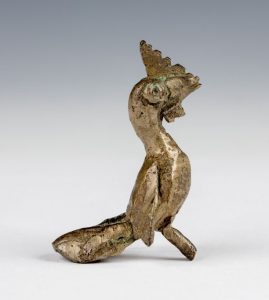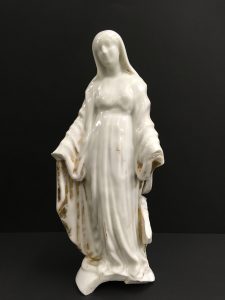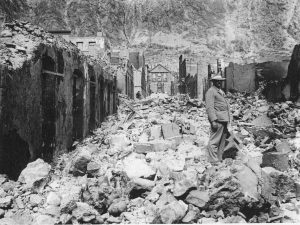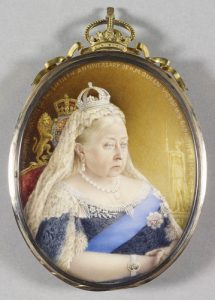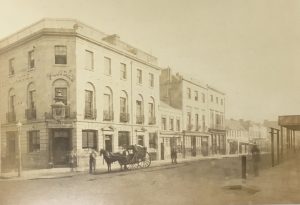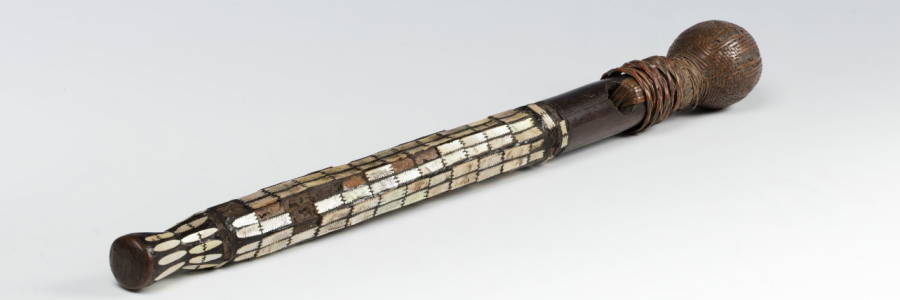
More Royal Commonwealth Society curious objects!
Soon after its foundation in 1868, the Royal Commonwealth Society had envisaged the establishment of a museum, but following the 1886 Colonial and Indian Exhibition in South Kensington, and the creation of the Imperial Institute, it abandoned the idea, and concentrated upon creating one of the greatest libraries devoted to the study of Britain’s overseas territories. Over the years, however, the society built up a small, eclectic collection of artefacts as members donated items they had received as gifts or purchased during work or travel overseas. Many of these items featured prominently in Cambridge University Library’s ‘Curious Objects’ exhibition, which celebrated its 600th anniversary in 2016. Since then work has progressed on listing, researching and re-housing the RCS collection of objects, and we are delighted to publish a catalogue on the university’s archival search engine (ORCS). Very little is yet known about several items and we would welcome any help to identify them.
Many objects have fascinating provenances, but perhaps no story is more striking than the recovery of a porcelain statue of the Virgin Mary, which survived the volcanic eruption of Mt. Pelée in Martinique on 8 May 1902. A pyroclastic flow of superheated steam, volcanic gases and dust destroyed the coastal city of Saint-Pierre, killing virtually all of its 30,000 inhabitants.
The blast and subsequent fires left little of the city standing and devastated an area of roughly 8 square miles, yet this statue was found among the ruins by Sir Hesketh Bell, Administrator of Dominica, ‘To our intense surprise, we found that this image was almost entirely undamaged, the hands and feet only having been broken off. This was a really an amazing thing, as it lay almost completely covered by big stones and bricks of considerable weight. That it should have escaped complete destruction, when the whole building collapsed, was a miracle’, Hesketh Bell, Glimpses of a governor’s life (London, 1946), p. 63.
Other interesting items appearing in the new catalogue, which did not feature in ‘Curious Objects,’ include a Cypriot Bronze Age dagger (c. 2100-1600 BC). It was probably acquired by Claude Delaval Cobham (1842-1915), Commissioner of Larnaca, 1879-1907, who presented his collection of Cypriot books and photographs to the society in 1913. There is a miniature of Queen Victoria painted by Ernest Rinzi in 1898 as a design for portraits to be enclosed in lockets for presentation to African leaders in the Gold Coast (Ghana). It was donated by Secretary of State for the Colonies Joseph Chamberlain in 1900.
The smallest artefact in the collection also has an intriguing story. It is a small circular copper token inscribed, ‘A. Toogood Merchant Pitt & King St. Sydney’. On the reverse is a woman in classical dress representing Justice, holding a set of scales in her right hand, and an overflowing cornucopia in her left. She sits upon a bale of wool, and behind her, a wine barrel lies on the ground and a ship sails across the horizon. Above her ‘Australia’ and the date ‘1855’ are inscribed.
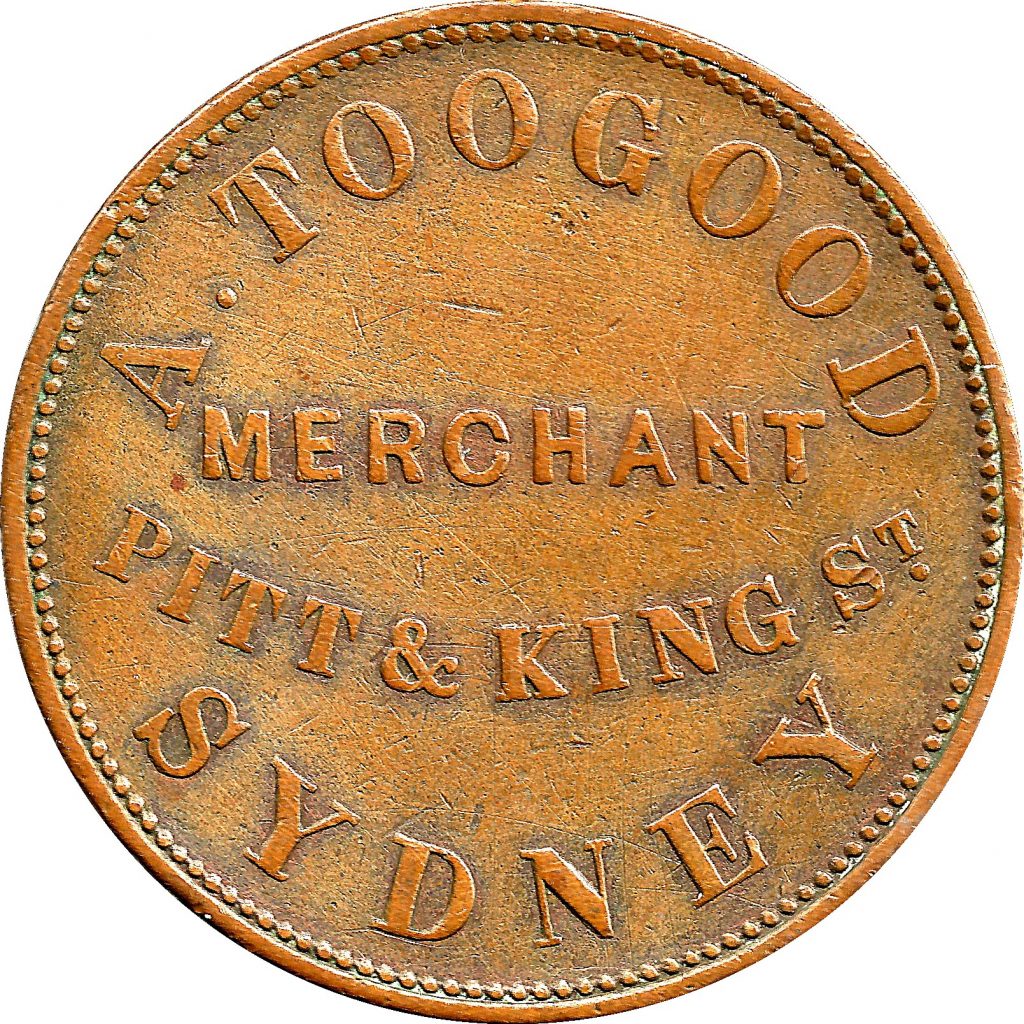
ORCS.8.03 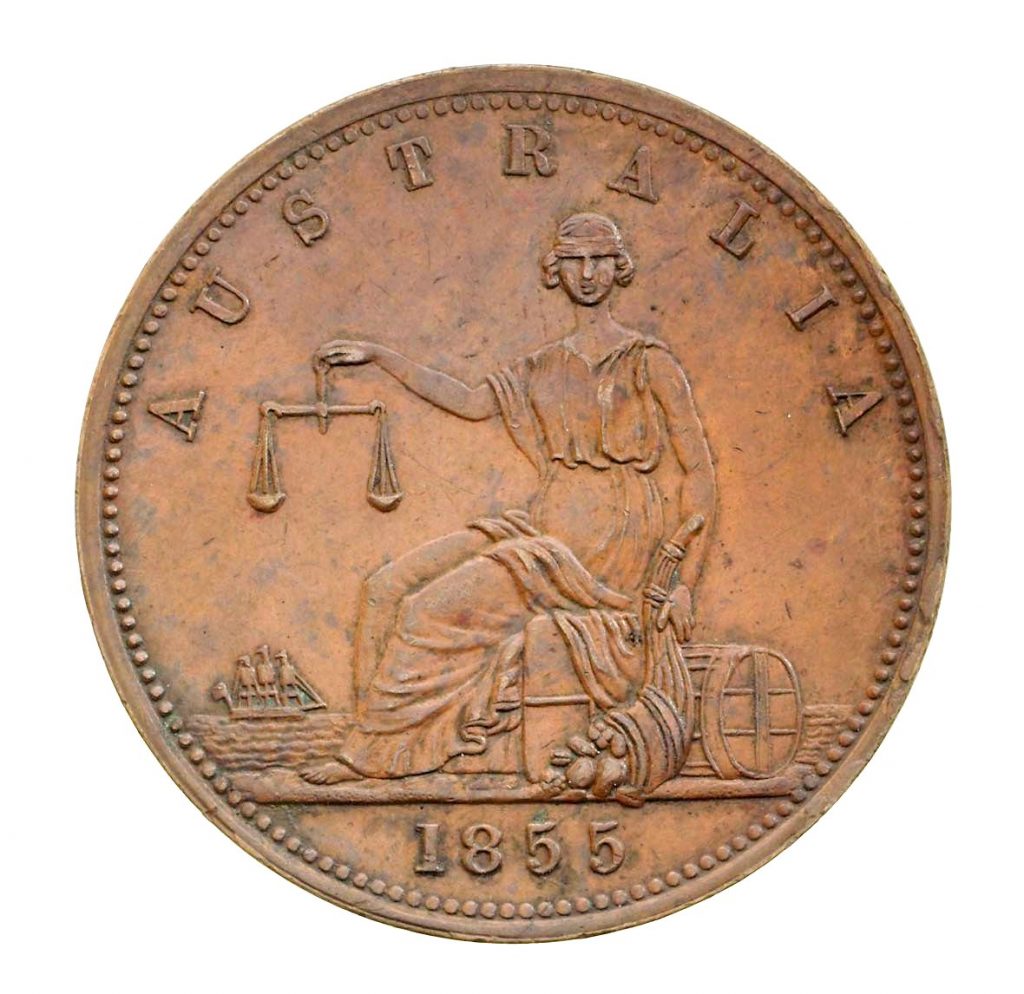
ORCS.8.03
The token had the monetary value of one penny and was produced for Alfred Toogood, proprietor of a Sydney hotel called The Rainbow Tavern between 1855 and 1867. Toogood’s establishment offered entertainment as well as food and accommodation. In the 1850s, merchants and businesses in Australia issued tokens due to a shortage of British pennies and they were only accepted in the premises of the person named on the token. I would be curious to learn what you could buy for a penny in an 1850s Sydney tavern. In contemporary London, it might buy you a quart of beer, a quarter of gin, a cup of coffee, but a meal at an ordinary resataurant would cost one and a half pence.
The RCS possesses an album of photographs of Sydney during the 1870s, showing one of the four corners of Pitt and King Streets, where Toogood’s hotel had been located in the previous decades. Its premises may been taken over by Thomas Punch, whose hotel (and billiard hall) appear in the left of the frame.
The featured image is a ceremonial sceptre from the Solomon Islands (ORCS.9.02).

